How to raise venture capital for your marketplace
How to prepare for a VC funding round? How to choose the right investor and catch their attention? How to close the deal? Here's Sharetribe’s CEO Juho’s complete guide to raising venture capital for your marketplace.
Published on
Last updated on

As I established in the previous article of this series, venture capital isn’t the right funding option for every marketplace. But if your business incentives align with what VCs are after, partnering with a venture capitalist can be a great call.
In this article, I’ll dive deep into the strategies for raising venture capital for an online marketplace. The process consists of five steps:
- Understand what investors look for in marketplaces.
- Prepare for the funding round carefully.
- Choose the right investors for your marketplace.
- Catch the VCs’ attention.
- Close the deal.
Let’s look at what each of these steps means in practice for the marketplace founder.
The key to raising VC money is understanding what your investors are looking for and delivering that.
The four most important things VCs want to see are:
- A great marketplace idea
- A strong team
- Traction
- Competition
If you manage to demonstrate all four things in the language VCs understand, you’ll have a good shot at catching investors’ attention.
From the perspective of a VC, a great marketplace idea means a concept that can reach unicorn status.
Version One Ventures, one of the most experienced marketplace-focused VCs, has a marketplace guide that discusses what Version One looks for in a marketplace. This guide is an excellent read before you start your fundraising process. Another helpful framework comes from Bill Gurley's classic article, 10 factors to consider when evaluating digital marketplaces.
The six main factors Version One uses to evaluate the potential of a marketplace idea are:
- High fragmentation in the target market (ideally lots of small sellers)
- Regular frequency of use/purchase (ideally as regular as possible)
- Is the buyer likely to use the same seller every time? (ideally not)
- Total available market (needs to offer a path to become a unicorn)
- Transactionality (ideally, your marketplace processes the payment between the buyer and the seller)
- The ability to expand the market (ideally, your marketplace creates business opportunities that weren't there previously)
Your marketplace doesn't need to have all of the six factors. But at least some of them are likely needed for attracting VC funding.
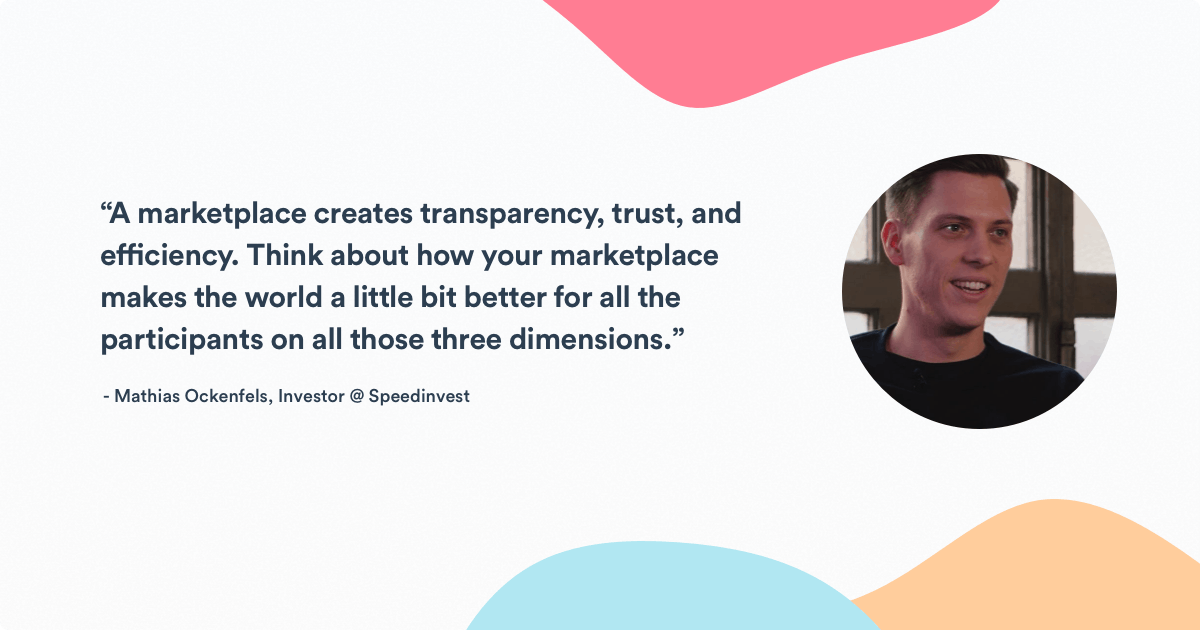
You need to demonstrate that your team is uniquely suited to execute your specific marketplace idea.
If your idea is any good, you’ll have several competitors. You need to explain why you’re able to execute better than they are, which often comes down to the quality of the initial team. VCs will be interested in how the combination of the founders’ experience makes them uniquely suited to the task at hand.
Sometimes, the team can matter even more than the idea. When Airbnb was applying for funding from the legendary incubator, Y-Combinator, the investors thought the original idea (accommodating people in airbeds) was bad, but the team seemed strong. Y-Combinator decided to invest because of the team, not the idea.

Traction refers to proof that your idea is working: how many people are using your platform, how many transactions you're processing, your gross merchandise volume – and how quickly these numbers are growing.
The metrics investors will be interested in vary case by case: there's no exact formula, as every business is different. The marketplace funding napkin by Point Nine Capital can provide helpful guidelines for evaluating the traction you need to demonstrate in each stage.
In the funding napkin, the different marketplace funding stages are "Seed," "Series A," and "Series B." Roughly, the stages map to the three stages of marketplace funding as follows:
- Problem-solution fit: If you need funding at this stage, it should be what is sometimes called "Pre-seed." It most likely shouldn't come from VCs. Unless you're a seasoned entrepreneur with successful exits under your belt, VCs will want to see proof of traction and revenue before they invest.
- Product-market fit: A Seed round to help reach the Scaling stage can make sense. Sometimes, a Seed round only happens after achieving product/market fit in a (small) home market. The goal of the Seed round, in this case, is to start expanding to prove your market entry model.
- Scaling: Series A, Series B, and subsequent funding rounds are meant for the scaling stage. You've proven liquidity in your initial market and are ready to enter new markets.
The funding stages can depend a bit on the type of marketplace. For example, Point Nine's 2021 Point Nine B2B Marketplace Funding Napkin has a slightly different set of stages.
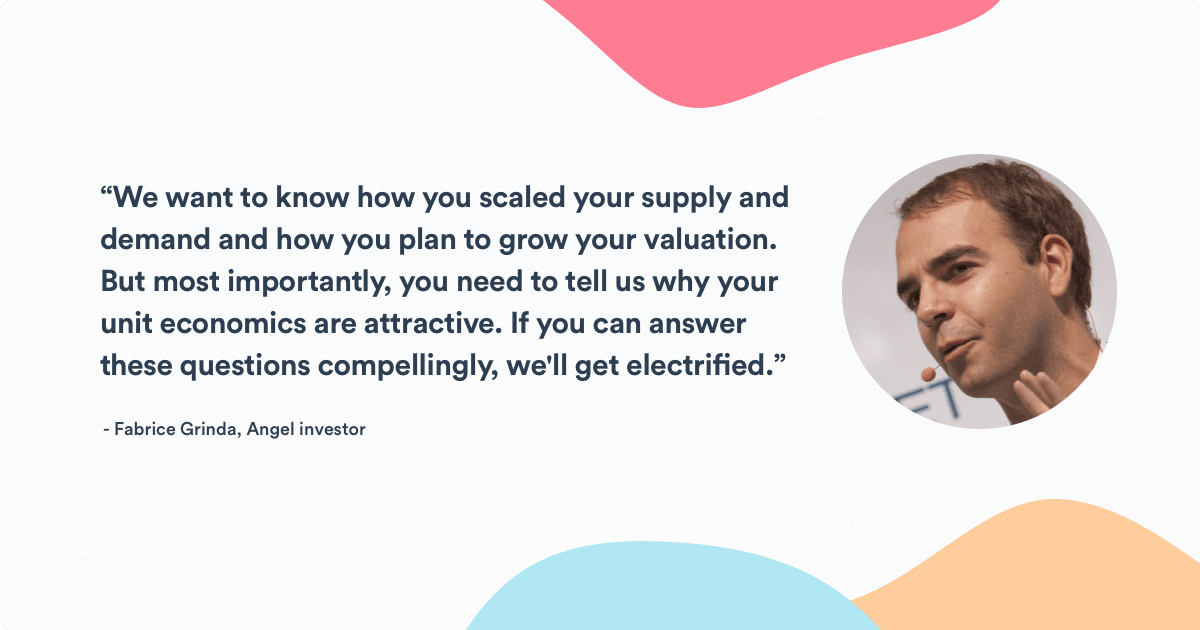
If your idea is solving a real problem for people, there likely are other businesses in the space. Even if nobody else has the same idea, other products certainly solve the same problem. You must give a comprehensive picture of the competitive landscape and explain why your approach will win.
If you're confident your concept and team are up for investors' scrutiny, it's time to start preparing for fundraising.
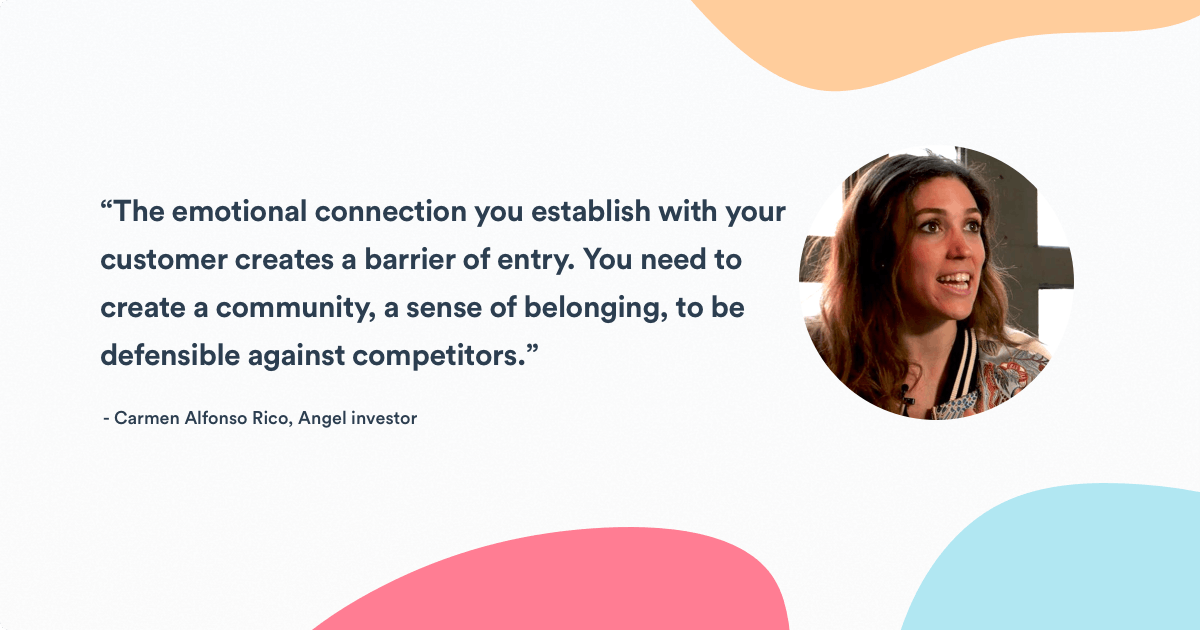
Clarify the amount of money you need and why you need it. Typically, you want to reach a specific milestone, which you estimate requires an upfront investment.
VCs usually expect their investment to take you through the next 18 months. After that, you should have reached a milestone where you can raise the next round of money with a higher valuation. The ability to continue raising funding usually means growing at least 100% year over year.
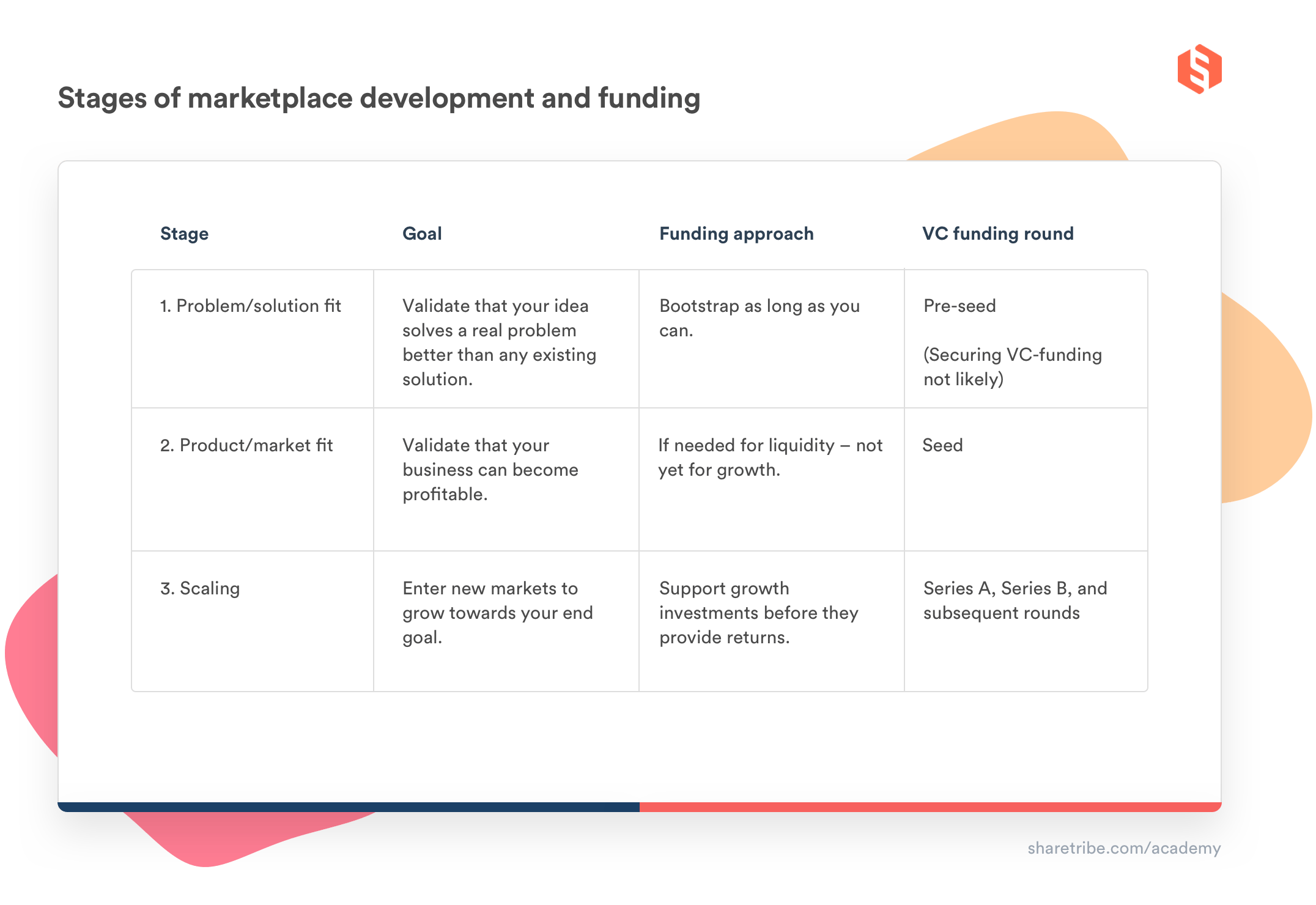
At the same time, you don't want to raise more than you need – that would mean giving away a bigger share of your company than is necessary. This simple guide by venture capitalist Fred Wilson, written in 2011, is still relevant today when deciding how much you should raise.
Getting offers (or term sheets in VC slang) from multiple VCs increases your chances of a successful funding round. Before reaching out to any investors, compile a database (a spreadsheet works just fine) of all the investors who might be interested.
There's a variety of online sources for this data. In addition, it's a good idea to reach out to people in your network who have raised VC funding ( or connect with such people at local startup events) and ask for references.
At this point, you want to include as many potential investors in your database as possible. However, do make sure you filter out investors that:
- Don't invest in your stage. If a VC only invests in rounds of $5 million and more, talking to them about a $500k investment is a waste of time.
- Don't invest in your industry. Some investors might invest in online marketplaces in general or in your target industry specifically.
- Don't have an active fund. If the investor raised their last fund five or more years ago, they can no longer invest in new companies.
Once you have your database compiled, the next step is to prioritize it based on stricter criteria. The next section will give you a framework for choosing the right investors for your marketplace.
You get more than just money when you raise funding from a VC. Your investor becomes a close business partner who has a significant impact on your company's future. You should choose your VC as carefully as you would a co-founder.
There are several things your VC can bring to the table besides the money: a supportive attitude, connections to other investors, domain expertise, and marketplace expertise.
You want to be able to discuss your company's situation, and even your challenges as a founder, with your VC as honestly as possible. Personal chemistry matters a lot here.
There are times when things don't go as planned for every startup. The more honest you can be towards your investors in those situations, the better the outcome will be for everyone. Your collaboration should feel like a partnership, not like a boss-subordinate relationship. Ask yourself: would you want this person to join your company as a team member? If the answer is no, they might not be the right investor for you either.
The first step to assessing the VC's fit is interviewing them. In addition, I recommend reaching out to founders of the portfolio companies the VC invested in to hear their opinions on the collaboration.
Likely, your first round of VC funding won't be your last. Once you've gone down the VC path, you've decided to pursue the kind of growth and scale that likely requires subsequent investment rounds.
Thus, the reputation of the VC and the connections they have in their field can become quite important. You want your VC to be someone with whom other VCs love to co-invest. To figure this out, research the follow-on rounds of your VC'sother portfolio companies. Note the names of the investors on those rounds –would you be happy to have those same names lead your follow-on round as well?
Your investors have to understand marketplace dynamics. Ideally, they have made prior investments in marketplace businesses. If not, they should at least be able to demonstrate knowledge of the core mechanics behind the growth of a marketplace.
Specifically, your investors should be aware of the dangers of prematurely scaling a marketplace – and on board with your strategy of moving through different stages.
An ideal investor for a marketplace business is a VC that focuses specifically on marketplace businesses, like NFX or Version One Ventures. This resource lists 40 VC firms that have experience investing in marketplaces. If your investor is one of them, you're likely in good hands.
A further important VC value proposition is knowledge of the domain in which you're building your marketplace. If it's a marketplace for booking a hairdresser, investors focused on health and wellness can provide meaningful input. If it's about surplus food, a VC with food industry expertise can be a valuable asset.
It might not be easy to get industry and marketplace expertise in the same package. Consider bringing in two investors simultaneously: one with marketplace expertise and another with deep industry expertise.
Now you know who you want to invest in your company. It's time to convince them to join your marketplace startup. It won't be easy: any good VC gets hundreds or even thousands of pitches each year and typically only invests in 1–5 of them. You need to stand out to be one of the selected few.
Before you reach out to investors, you should have a set of materials that help the VC assess the investment case quickly. These materials are often the first impression the VC gets from you. It's a good idea to put some effort into them.
Prepare one slide deck (in PowerPoint or PDF form) to send to the VC. The slide deck should be short, no more than ten slides, and focus on your business essentials. Make sure the deck works well without you supporting it with a presentation. If you get to meet with the VC, you can use a different deck that works better in a presentation.

Remember to build the decks from the perspective of the VC. Focus on the four things investors are most interested in: idea, team, traction, and competition. Style the slides to communicate your core message at a glance. If you're not good with visuals, get a freelance designer to polish your slides a bit.
An introduction is always likelier than a cold email to get you a meeting with a VC. If you know someone who knows the VC you want to talk to, ask them for an introduction.
If you don't have a pre-existing connection, you can try reaching out to a CEO of a portfolio company of the VC firm and inviting them to lunch. Tell them you're considering raising funding from this VC and ask for their feedback. The fellow CEO might be happy to make an intro.
The third-best option is to see if the VC is attending any startup events in the near future. Such events can be a good opportunity for making the first contact.
If there's no shortcut to the VC, a cold email is usually better than nothing. Some VCs encourage them and respond to every email. Others always require an intro. Usually, you can find hints about the VC's attitude towards cold emails on their website.
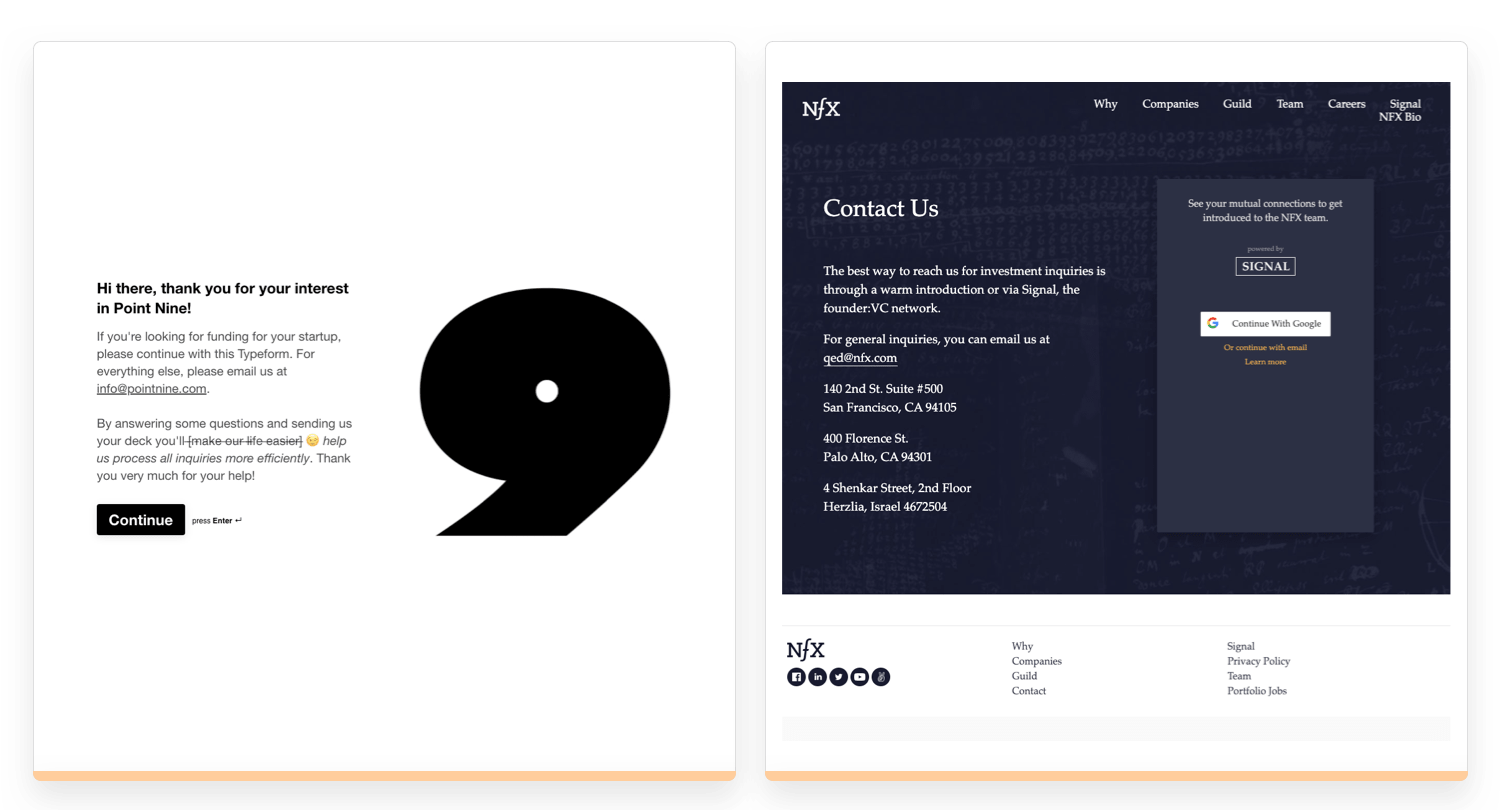
As your company grows, you'll notice you start getting outreaches from VCs. When this happens, check the status of the person reaching out. Typically, these emails come from analysts or associates who don't have actual decision-making power. The outreach is about initial market research for the VC and, in most cases, won't lead to an investment.
Nevertheless, if a VC on your list happens to reach out, it won't hurt to have a call with them and interview them about their process. To close the deal, you need to get to talk to a partner.
Your first meeting with the VC begins a process that can sometimes take months. If things go well, you'll receive a term sheet at some point. Most VCs will likely say no, so reach out to enough potential VCs. If you have at least two VCs saying yes, you can pressure them to move forward faster.
The term sheet is the beginning of a negotiation process that can take quite a while. There's a mass of deal terms and terminology you need to understand. I heavily recommend reading Venture Deals before you start your fundraising process. While some legal language in it is US-specific, 90% of the advice in the book applies to companies raising VC capital anywhere in the world.
In addition to Venture Deals, there are loads of other resources on raising venture capital. I recommend reading the blogs of established VCs like Fred Wilson, Brad Feld, and Mark Suster to learn more about how VCs think. After all, the essential thing in raising venture capital is understanding VCs' incentives and giving them what they want.
Good VCs get hundreds of pitches every year and invest in 1–5. To stand out of the crowd, you need to understand what investors look for in marketplaces and make a convincing case for your business.
At the same time, you should also have strict criteria for the investor. They will become a close partner who influences your company's future. They must bring the right kind of expertise and attitudes to the table.
VC funding is probably the best-known marketplace funding alternative, but it isn't the only one. In the following articles, I'll discuss increasingly popular startup funding methods: crowdfunding and revenue-based financing (and other non-dilutive funding alternatives).
You might also like...

How to crowdfund your marketplace
Your marketplace startup funding options aren’t limited to bootstrapping or raising venture capital. Read on for our CEO Juho’s best tips on a funding method close to all our hearts at Sharetribe: crowdfunding.

Why raise venture capital for your marketplace – and why not
Should you raise VC funding for your marketplace? If you want to build a unicorn, yes. If you want to get rich – maybe not.

The top 40 + 10 marketplace investors and VC firms
The title says it all. Here are the people to keep an eye on in the marketplace investment scene.

“Make your marketplace unit economics work,” says Fabrice Grinda
When one of the world’s most successful angel investors talks marketplaces, we listen.
Start your 14-day free trial
Create a marketplace today!
- Launch quickly, without coding
- Extend infinitely
- Scale to any size
No credit card required
